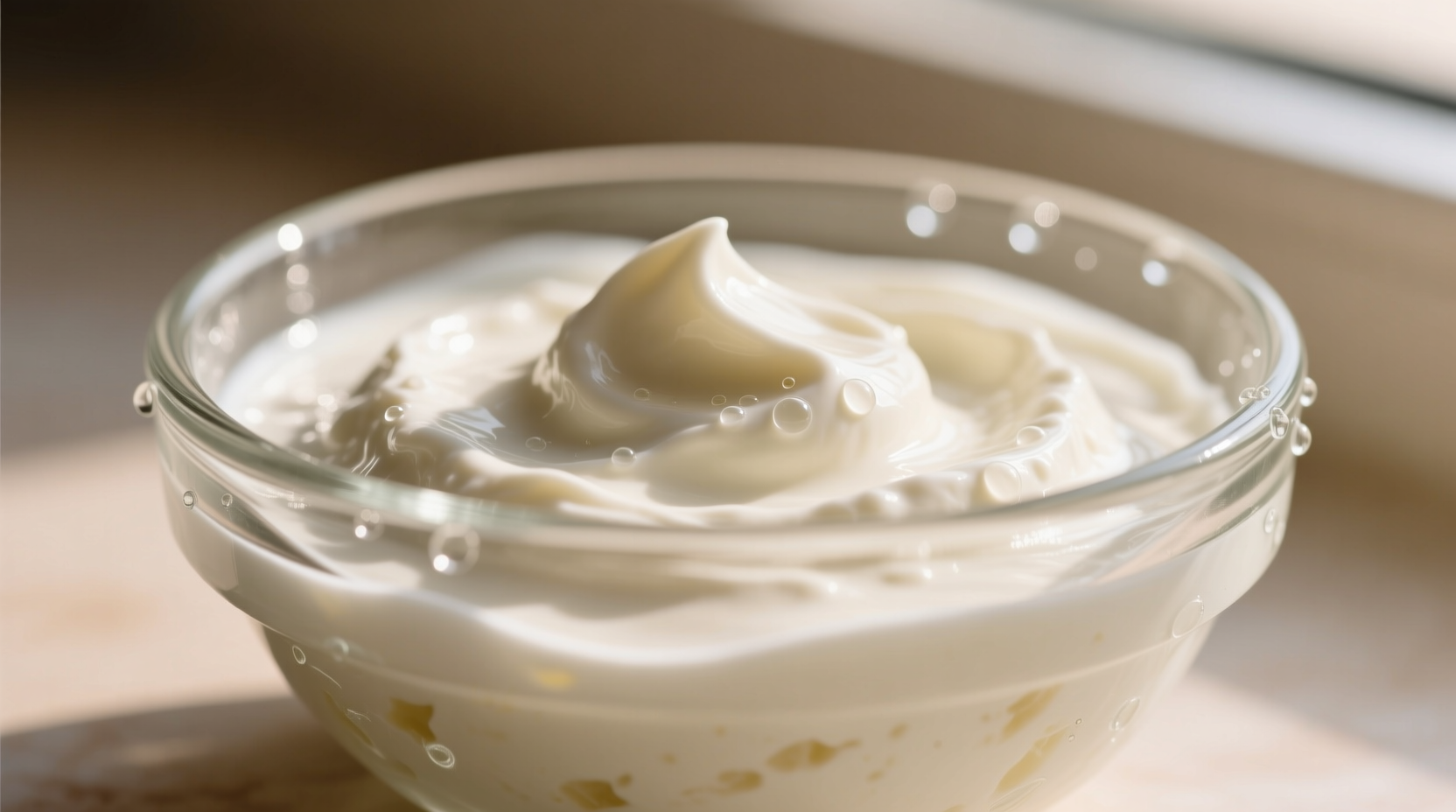If you've ever wondered what does Greek yogurt taste like compared to regular yogurt, you're not alone. This comprehensive guide breaks down the exact sensory experience so you know precisely what to expect before your first spoonful.
The Distinctive Taste Profile of Greek Yogurt
When you take your first bite of plain Greek yogurt, you'll immediately notice its dense, velvety texture that clings to your spoon. The flavor hits your palate in distinct waves:
- Initial impression: A clean, refreshing tang that's more pronounced than regular yogurt
- Middle notes: Creamy dairy richness with subtle sweetness from natural milk sugars
- Finish: Crisp, clean aftertaste without lingering sweetness
This distinctive flavor profile comes from the traditional straining process that removes whey, concentrating both the protein content and the natural lactic acid produced during fermentation. According to food science research from the USDA Agricultural Research Service, this process increases the lactic acid concentration by approximately 25% compared to unstrained yogurt, directly contributing to the characteristic tang.
Greek Yogurt vs. Regular Yogurt: A Direct Comparison
| Characteristic | Greek Yogurt | Regular Yogurt |
|---|---|---|
| Texture | Thick, creamy, almost spreadable | Pourable, thinner consistency |
| Tanginess Level | Moderate to pronounced | Mild to moderate |
| Sweetness (plain) | Subtly sweet | Noticeably sweeter |
| Protein Content | 15-20g per 6oz serving | 5-9g per 6oz serving |
| Production Process | Strained 2-3 times to remove whey | Minimal straining |
How Production Affects Greek Yogurt Flavor
The distinctive taste of Greek yogurt isn't accidental—it's the direct result of a specific production process developed over centuries. Traditional Greek yogurt undergoes a meticulous straining process that evolved from ancient Mediterranean cheesemaking techniques:
- Milk selection: Typically whole or 2% milk with specific bacterial cultures
- Fermentation: 4-8 hours at controlled temperatures (108-112°F)
- Initial straining: Removes about 50% of the whey
- Secondary straining: Additional 1-2 rounds to achieve desired thickness
- Final product: Concentrated milk solids with elevated protein and lactic acid
This multi-stage process, documented in culinary research from the Food and Agriculture Organization, creates a product with approximately double the protein and half the sugar of regular yogurt, directly influencing its characteristic tartness and substantial mouthfeel.

Factors That Influence Greek Yogurt Taste Experience
Your personal experience with Greek yogurt's flavor can vary significantly based on several key factors:
Fat Content Differences
Full-fat Greek yogurt (10% milk fat) delivers a noticeably richer, creamier experience with a more rounded flavor profile that softens the tang. Non-fat versions (0% milk fat) often have a sharper, more pronounced sour note as the absence of fat allows the lactic acid to dominate the flavor profile.
Brand Variations
While authentic Greek yogurt follows traditional production methods, commercial variations exist. Some brands add thickeners like pectin or starch, while others adjust fermentation times. These modifications create subtle but noticeable differences in both texture and flavor intensity.
Cultural Taste Preferences
Research from the National Center for Biotechnology Information shows significant regional variations in acceptable yogurt tanginess levels. Mediterranean consumers typically prefer more pronounced tartness, while North American palates often gravitate toward milder versions—explaining why many U.S. brands offer "mild" Greek yogurt varieties.
How to Adjust Greek Yogurt to Your Taste Preferences
If the natural tang of Greek yogurt seems too strong initially, these professional chef techniques can help you customize it to your liking:
- Natural sweetening: Stir in honey or maple syrup (1 tsp per 6oz) for balanced sweetness
- Fruit infusion: Add mashed banana or berries to mellow the tang while adding natural sweetness
- Texture modification: A splash of milk creates a parfait-friendly consistency without diluting flavor
- Flavor pairing: Combine with nuts or granola to create textural contrast that distracts from pronounced tartness
Professional chefs often recommend starting with small portions and gradually increasing consumption. As noted in culinary research from the Culinary Institute of America, repeated exposure to tangy flavors typically increases consumer acceptance within 2-3 weeks as your palate adapts.
Common Misconceptions About Greek Yogurt Taste
Many first-time tasters approach Greek yogurt with inaccurate expectations. Let's clarify some common misunderstandings:
- "It's supposed to taste sour" - The tang comes from natural fermentation, not spoilage
- "All Greek yogurt tastes the same" - Production methods create significant flavor variations between brands
- "The thickness means it's artificial" - The dense texture results from traditional straining, not additives
- "If I don't like it immediately, I never will" - Palate adaptation typically occurs within 2-3 weeks of regular consumption
Understanding what authentic Greek yogurt tastes like helps set proper expectations. The clean, refreshing tartness serves as a culinary canvas that enhances both sweet and savory applications—explaining its popularity among professional chefs worldwide.











 浙公网安备
33010002000092号
浙公网安备
33010002000092号 浙B2-20120091-4
浙B2-20120091-4